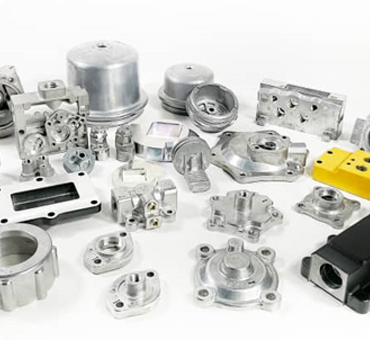The Art and Science of Diecasting: Precision in Manufacturing
March 23, 2024
Within the world of manufacturing, where accuracy quality, durability, and efficiency is paramount, diecasting can be seen as an example of the union of science and art. Diecasting, which is a process that has its roots in ancient techniques, but constantly changing with the advancement of technology, is a key component across a variety of industries around the world. From car components to intricate electronic components, diecasting gives unbeatable advantages when it comes to creating complex metal parts that have exceptional clarity and high-quality.
Diecasting involves the injection of molten metal into the mold of a steel and then pressing it under pressure. This method, acclaimed due to its fast process times as well as large production capacities, allows companies to make intricate forms and designs that are extremely precise and consistency. Diecasting molds are usually made from metal that has been hardened and designed using a meticulous process to resist the extreme pressure and temperature of the melting metal. It is the result that you get a product with precise tolerances and superior surface finishes that require the least amount of processing afterward.
One of the major benefits of diecasting is the ability of it to work with an array of different metals and alloys. This includes magnesium, aluminum, zinc and copper. Every material has its own distinctive characteristics that are unique to it, such as the light and durable nature of aluminum or the impressive strength-to-weight ratio for magnesium. The manufacturers can choose the best material for their needs according to factors such as the strength requirement, thermal conductivity and price-effectiveness. This will guarantee maximum performance in the desired purpose.

Alongside the material’s versatility In addition, diecasting provides unmatched flexibility in design, which allows engineers to design complicated geometries as well as intricate details which would be difficult or impossible to attain using alternative manufacturing processes. This is especially beneficial for industries in which lightweight but robust components are essential for aerospace or automotive. Utilizing the power computers-aided design (CAD) software as well as advanced software for simulation, designers are able improve the geometry of parts for durability, strength as well as manufacturability. This is expanding the limits of design. For more information please visit here Senadiecasting
Furthermore, diecasting excels at attaining tight dimensional tolerances as well as constant part-to-part consistency, which are essential features in production facilities in which quality control is a must. Being able to keep exact dimensions and consistency over millions or thousands of pieces ensures smooth installation and compatibility, which reduces production waste while increasing overall performance. This degree of accuracy is crucial in security-sensitive situations where minor errors could result in catastrophic damage.
Although it has many benefits however, diecasting does not come without the challenges. Diecasting requires specialized tools and machinery, a substantial initial investment and skilled operators who can ensure the best performance. Furthermore, elements like porosity, shrinkage, as well as thermal stresses may affect the quality of the final piece, which requires careful optimizing and quality-assurance procedures. But, advances in the field of diecasting technology, such as better alloys, improved mold design and monitoring systems continue to solve these problems and improve efficiency, reliability and sustainability in diecasting production.